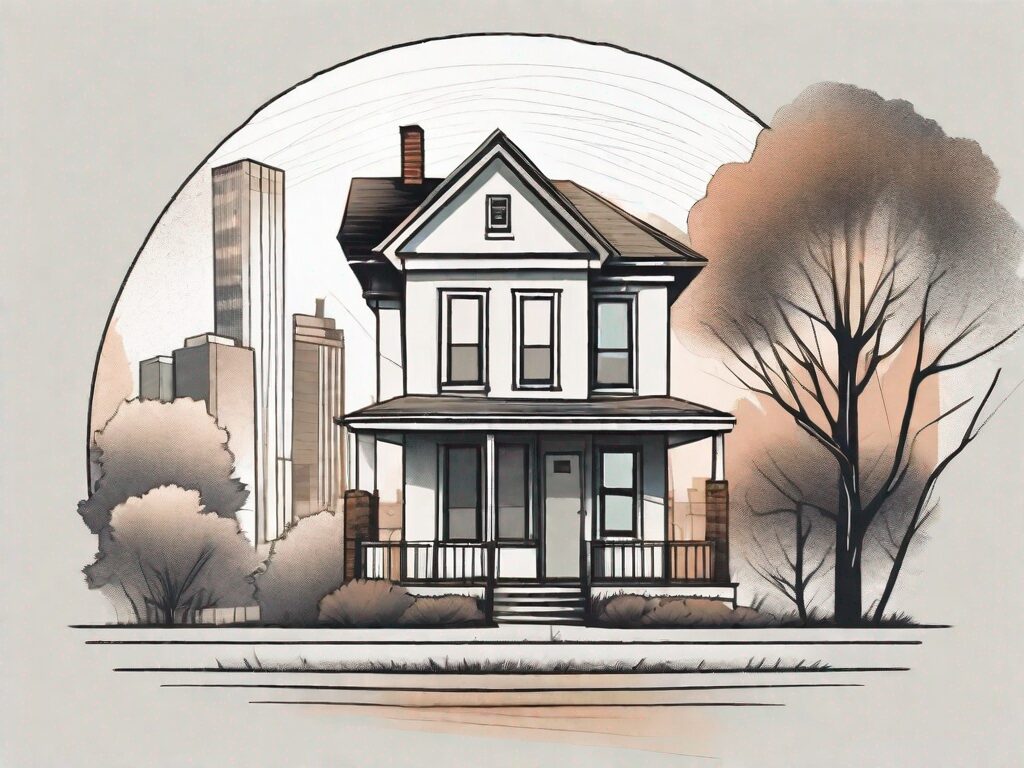
Agent A-Team or Solo Superhero? Finding the Right Real Estate Partner for Your Selling Journey in Wildwood Florida
When it comes to selling your home in Wildwood, Florida,…
January 29, 2024
Foreclosure can be a devastating experience for homeowners, but it doesn’t have to be inevitable. With the right understanding and strategies, you can navigate the process and find alternatives to keep your home. In this comprehensive guide, we will explore the foreclosure process in Oklahoma, the state’s foreclosure laws, and various strategies to prevent foreclosure. Additionally, we will answer frequently asked questions to provide a holistic understanding of foreclosure regulations in Oklahoma. By the end of this guide, you will have the knowledge and tools to take proactive steps towards avoiding foreclosure and protecting your home.
Foreclosure can be a complex and overwhelming process. To effectively navigate it, it’s crucial to demystify the steps involved. In Oklahoma, foreclosure typically begins when a homeowner falls behind on their mortgage payments. The lender will then initiate legal proceedings to reclaim the property in order to recover the outstanding debt. Understanding the stages of foreclosure, such as the notice of default and the auction, will empower you to make informed decisions in response to each step.
When a homeowner receives a notice of default, it serves as a formal warning that they are in danger of losing their home. This notice outlines the amount of money owed, including any late fees or penalties, and provides a deadline for payment. It is important to take this notice seriously and seek professional advice to explore available options.
Once the notice of default has been issued, the foreclosure process moves forward with the auction. This is a public sale where the property is sold to the highest bidder. In Oklahoma, foreclosure auctions are typically held at the county courthouse or another designated location. It is important to note that the auction process can vary depending on the specific county and state laws.
During the auction, potential buyers have the opportunity to bid on the property. The highest bidder will be required to pay the full amount in cash or through financing within a specified timeframe. If no one bids on the property, it may become the possession of the lender, who will then attempt to sell it through other means.
Each state has its own set of laws and regulations pertaining to foreclosure. In Oklahoma, it is essential to be aware of these laws to protect your rights as a homeowner. We will delve into key aspects of Oklahoma’s foreclosure laws, such as the redemption period and the process for deficiency judgments. By understanding the legal framework governing foreclosure in the state, you can better navigate potential challenges and explore available options.
In Oklahoma, homeowners have a redemption period after the foreclosure sale. This period allows them to reclaim their property by paying off the outstanding debt, along with any additional costs incurred during the foreclosure process. The length of the redemption period can vary depending on various factors, such as the type of foreclosure and the specific circumstances of the case.
Another important aspect of foreclosure laws in Oklahoma is the process for deficiency judgments. In some cases, the sale of the foreclosed property may not fully cover the outstanding debt. If this happens, the lender has the option to pursue a deficiency judgment against the homeowner. This means that the homeowner may be held responsible for paying the remaining balance, even after losing their property.
Understanding these laws and regulations can help homeowners in Oklahoma make informed decisions throughout the foreclosure process. It is important to consult with legal professionals who specialize in foreclosure to ensure that your rights are protected and that you have a clear understanding of the options available to you.
Foreclosure can be a daunting prospect for homeowners in Oklahoma, but there are several strategies you can employ to prevent it. In this article, we will explore various options that can help you navigate this challenging situation and potentially save your home. From bankruptcy to loan modification, reinstating your loan to creating a repayment plan, refinancing to selling your home, we will provide detailed insights into each strategy, discussing eligibility criteria, documentation requirements, and the benefits and considerations associated with each approach.
Bankruptcy can be a viable option for homeowners facing foreclosure. By filing for bankruptcy, you can benefit from an automatic stay, which temporarily halts foreclosure proceedings. We will discuss the different types of bankruptcy available in Oklahoma and how they can provide relief and breathing room. Additionally, we will address the potential impact of bankruptcy on your credit score and long-term financial situation, helping you make informed decisions.
Furthermore, we will delve into the bankruptcy process, discussing the necessary documentation, court proceedings, and the role of a bankruptcy attorney. Understanding the intricacies of bankruptcy can empower you to take control of your financial situation and potentially prevent foreclosure.
Loan modification is another tool to prevent foreclosure. By renegotiating the terms of your mortgage with your lender, you can potentially lower your monthly payments, extend the loan term, or change the interest rate. We will explore the loan modification process in detail, discussing eligibility criteria, documentation requirements, and the benefits and considerations associated with this foreclosure prevention strategy.
Moreover, we will provide insights into the communication process with your lender, including tips on how to effectively negotiate for a loan modification. Understanding the loan modification process can give you the confidence to pursue this option and potentially save your home from foreclosure.
If you have fallen behind on your mortgage payments, reinstating your loan may provide a way to avoid foreclosure. Reinstatement involves paying the overdue amount and any associated fees to bring your loan current. We will guide you through the steps to reinstate your loan, providing insights into the process, potential financial implications, and strategies for bridging the gap to prevent future delinquency.
Additionally, we will discuss the importance of budgeting and financial planning to ensure that you can successfully reinstate your loan and maintain your mortgage payments moving forward. Understanding the reinstatement process can give you the tools to take action and prevent foreclosure.
If you are experiencing financial hardship, creating a repayment plan may be a viable option to avoid foreclosure. A repayment plan allows you to gradually catch up on missed payments while maintaining your current mortgage terms. We will discuss the key elements of a successful repayment plan, including budgeting, communication with your lender, and establishing realistic goals to get back on track.
Furthermore, we will provide tips on how to effectively communicate with your lender and negotiate a repayment plan that suits your financial situation. Understanding the components of a successful repayment plan can empower you to take control of your finances and prevent foreclosure.
Refinancing can be an effective strategy to prevent foreclosure by replacing your current mortgage with a new loan. We will explore various refinancing options available in Oklahoma, including government-backed programs and traditional refinancing opportunities. By understanding the refinancing process and the potential benefits and drawbacks, you can determine if this approach aligns with your financial goals and circumstances.
Additionally, we will discuss the eligibility criteria for refinancing, the documentation required, and the potential costs associated with this strategy. Understanding the refinancing options available to you can help you make an informed decision and potentially save your home from foreclosure.
For some homeowners, selling their home may be the best solution to avoid foreclosure. We will discuss the potential advantages of selling your property, such as minimizing the impact on your credit score and regaining control over your finances. Additionally, we will guide you through the process of selling your home, including market considerations, finding a reputable real estate agent, and understanding the pros and cons of a short sale versus a traditional sale.
Furthermore, we will provide insights into preparing your home for sale, staging techniques, and effective marketing strategies. Understanding the process of selling your home can empower you to make informed decisions and potentially prevent foreclosure.
A short sale occurs when a homeowner sells their property for less than the remaining mortgage balance. While it can be a complex process, a short sale can potentially relieve you of the financial burden and the risk of foreclosure. We will explain the intricacies of short sales in Oklahoma, including eligibility requirements, documentation needed, and negotiating with your lender. By understanding the short sale process, you can make informed decisions regarding this alternative to foreclosure.
Additionally, we will discuss the potential impact of a short sale on your credit score and the importance of working with a qualified real estate agent experienced in short sales. Understanding the nuances of short sales can provide you with the knowledge to pursue this option and potentially avoid foreclosure.
Deed in lieu of foreclosure is an option where you voluntarily transfer ownership of your property to the lender to avoid foreclosure. This approach provides benefits such as reducing the impact on your credit score and potentially obtaining release from deficiency judgments. We will explore the process of a deed in lieu of foreclosure, its implications, and the criteria that lenders typically consider when evaluating such requests.
Furthermore, we will discuss the importance of seeking legal advice and understanding the potential tax implications of a deed in lieu of foreclosure. Understanding the intricacies of this option can empower you to make informed decisions and potentially prevent foreclosure.
The foreclosure process in Oklahoma follows a specific timeline. We will outline the key stages and timeframes involved, from the initial notice of default to the auction of the property. Understanding this timeline can help you plan your foreclosure prevention strategies and take appropriate action within the given timeframes.
When a homeowner in Oklahoma falls behind on their mortgage payments, the lender will typically send them a notice of default. This notice serves as a warning that foreclosure proceedings may begin if the homeowner fails to bring their payments up to date within a certain timeframe. It is important to take this notice seriously and explore options to prevent foreclosure.
If the homeowner fails to resolve the default, the lender will then file a lawsuit to initiate the foreclosure process. This is known as the pre-foreclosure stage. During this stage, the homeowner still has an opportunity to work out a solution with the lender, such as a loan modification or repayment plan.
If no resolution is reached, the property will be scheduled for auction. The auction is typically conducted by a county sheriff or a designated auctioneer. Interested buyers can participate in the auction and bid on the property. The highest bidder will become the new owner of the property, and the proceeds from the sale will go towards satisfying the outstanding mortgage debt.
It is important to note that the timeline for foreclosure in Oklahoma can vary depending on various factors, including the lender’s policies, the complexity of the case, and any legal challenges raised by the homeowner. Therefore, it is crucial to seek legal advice and understand the specific timeline applicable to your situation.
In certain cases of foreclosure, there may be surplus funds remaining after the property is sold at auction. These surplus funds can be claimed by the homeowner or other interested parties. We will discuss the process of claiming surplus funds and the legal requirements in Oklahoma to ensure you maximize your chances of retrieving any remaining funds rightfully owed to you.
When a property is sold at auction, the proceeds from the sale are used to pay off the outstanding mortgage debt, as well as any associated fees and costs. If the amount generated from the sale exceeds the total debt owed, a surplus is created. This surplus can be claimed by the homeowner, junior lienholders, or other parties with a legal interest in the property.
To claim the surplus funds, interested parties must file a claim with the court within a specified timeframe. The claim must include supporting documentation and evidence of the claimant’s legal right to the surplus. It is important to consult with an attorney familiar with foreclosure laws in Oklahoma to ensure all necessary requirements are met.
Once the claim is filed, the court will review the documentation and determine the rightful distribution of the surplus funds. If the claim is approved, the court will issue an order for the distribution of the funds. It is important to note that the distribution of surplus funds is subject to priority rules, which prioritize certain claims over others.
By understanding the process of claiming surplus funds and the legal requirements in Oklahoma, homeowners and other interested parties can take the necessary steps to maximize their chances of retrieving any remaining funds rightfully owed to them.
The statute of limitations dictates the time within which a lender can initiate foreclosure proceedings on a deed of trust. We will explain the relevant statute of limitations for foreclosure in Oklahoma and how it may impact your foreclosure prevention strategies. By understanding this legal timeframe, you can better assess the available options and take timely action to address your financial situation.
In Oklahoma, the statute of limitations for foreclosure on a deed of trust is typically five years. This means that if a homeowner defaults on their mortgage payments, the lender has up to five years from the date of default to initiate foreclosure proceedings. After the expiration of the statute of limitations, the lender’s right to foreclose may be barred.
It is important to note that the statute of limitations can be extended or tolled under certain circumstances, such as if the homeowner acknowledges the debt or enters into a repayment agreement. Additionally, the statute of limitations may vary depending on the specific terms outlined in the deed of trust or any applicable state laws.
Understanding the statute of limitations for foreclosure in Oklahoma is crucial when developing foreclosure prevention strategies. Homeowners facing financial difficulties should be aware of the timeframe within which they may be at risk of foreclosure and take appropriate action to address their situation.
By seeking legal advice and exploring options such as loan modifications, repayment plans, or seeking assistance from foreclosure prevention programs, homeowners can take proactive steps to avoid foreclosure and protect their homes.
In conclusion, foreclosure can be a daunting experience, but with the right knowledge and strategies, it is possible to avoid it. By understanding the foreclosure process in Oklahoma, the state’s laws, and exploring various prevention strategies, you can make informed decisions to protect your home. Remember, seeking professional guidance and discussing your options with experts is always advisable when facing foreclosure. Armed with this comprehensive guide, you are ready to take proactive steps and safeguard your future.

If you want the Richr team to help you save thousands on your home just book a call.
 Book a call
Book a call